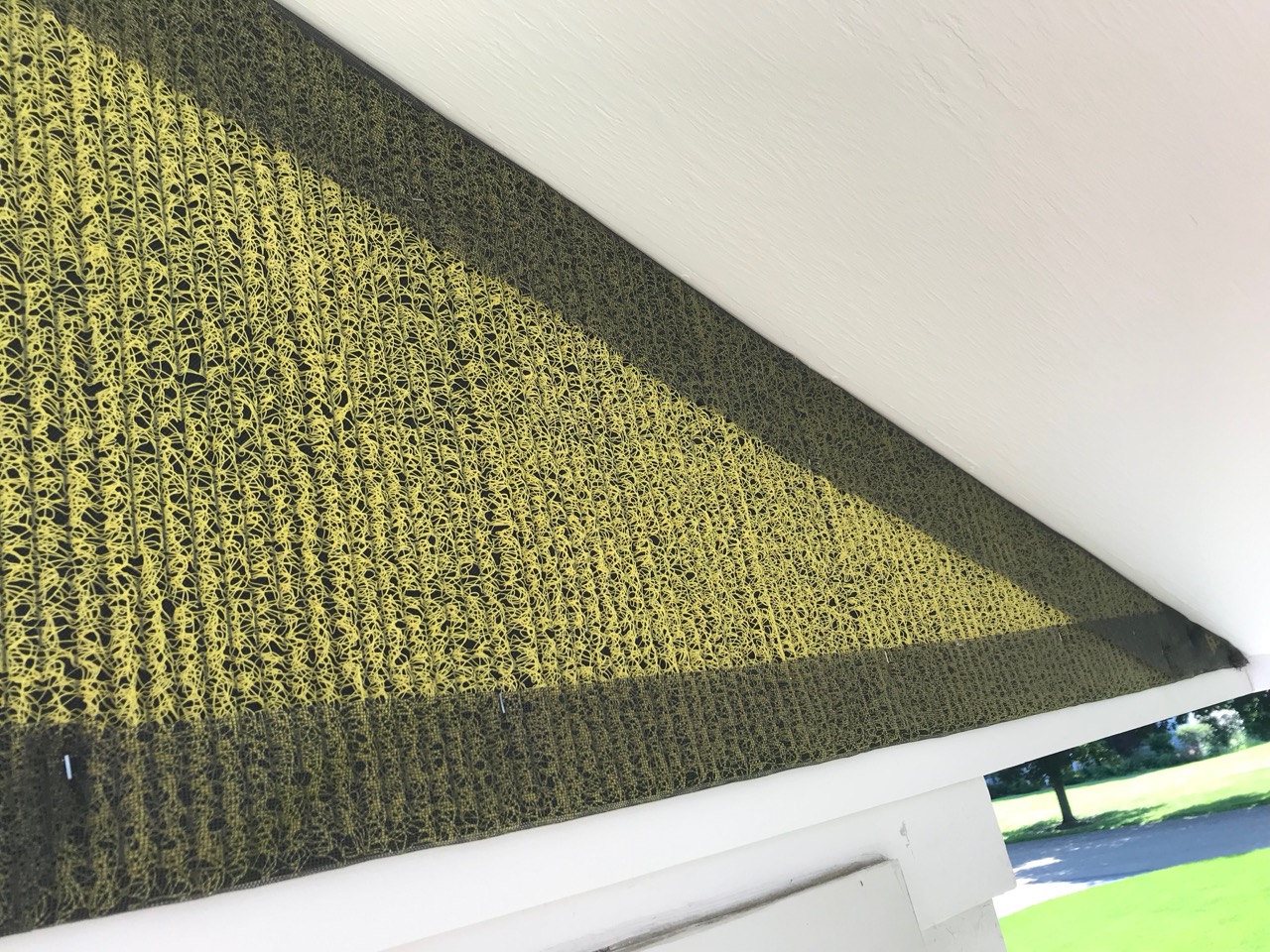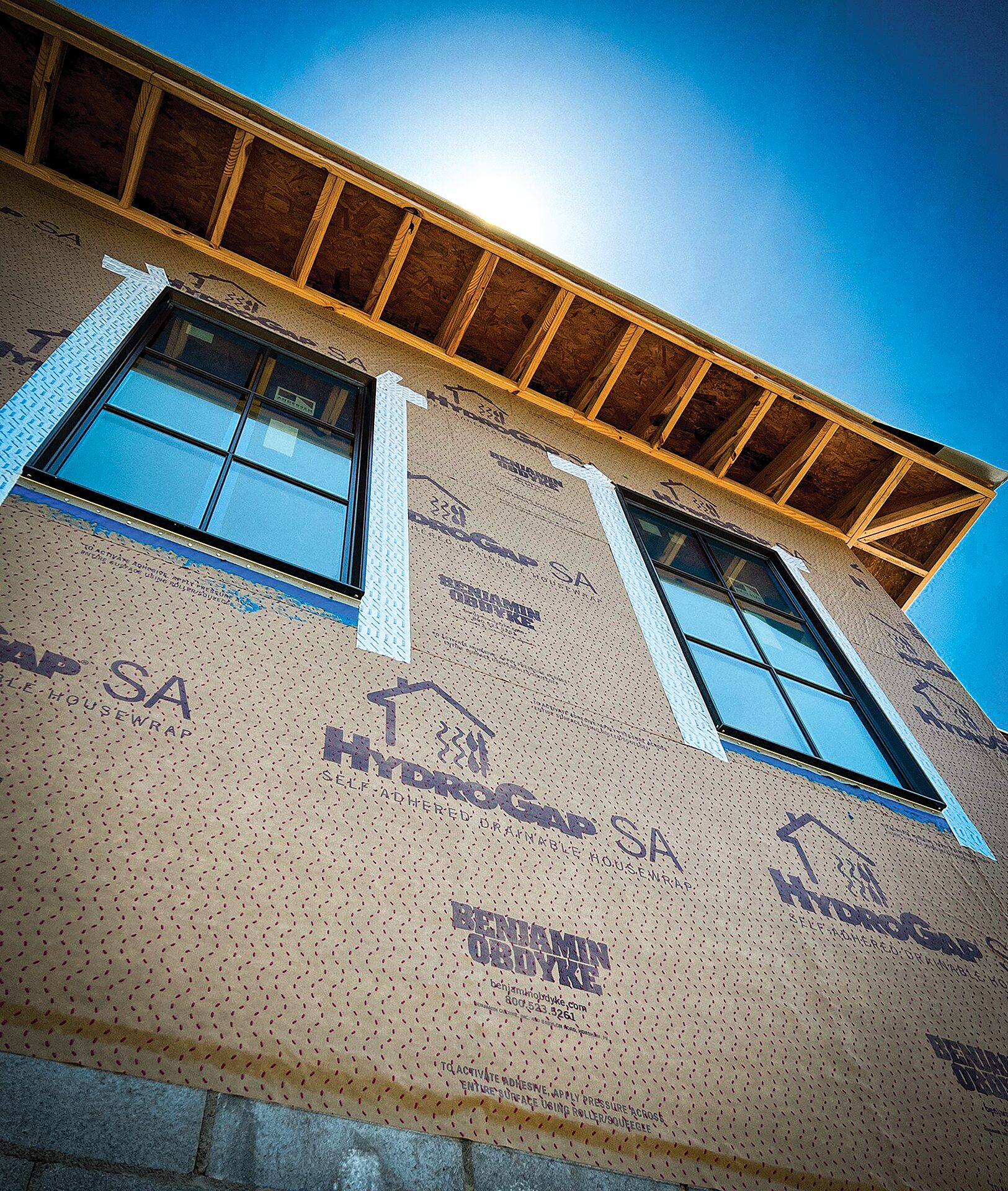One of the common challenges the building industry faces is avoiding water intrusion behind the wall. This is partly because of catastrophic failures from the 1990s when exterior installation finished systems (EIFS) were marketed and used as being impenetrable from water. However, we now know that a buildup of water or moisture behind cladding can lead to failures and damage, such as mold and rot. Codes have since changed, and now many siding manufacturers require housewraps with a drainage efficiency of over 90% to be used behind their products. But what we’ve learned is that drainage efficiency doesn’t tell the whole story when it comes to the performance of your housewrap. Let’s take a look at what drainage efficiency means and what else we should be considering.
Drainage Efficiency
If you want to get technical, ASTM E2273 determines the drainage efficiency of a housewrap. Though the ASTM standard is a great starting point, it’s not the best way to evaluate the long-term performance of a housewrap and the protection it offers to the building envelope. To summarize, this ASTM standard test consists of a transparent box being sealed to the wall and sprayed with water for over an hour and a half. After 60 minutes, the amount of water collected at the bottom of the wall assembly is measured to calculate your results. From these results, you now know your drainage efficiency, or the drainage rate, of the housewrap or weather-resistive barrier.
For the standard code, your drainage efficiency needs to be above 70% drainage. However, some states and siding manufacturers require 90% drainage. Let us give you an example, if you’re facing a requirement of 90% drainage efficiency, you should be able to pour ten ounces of water into the assembly and expect nine ounces to exit from the bottom. This is fine and dandy; however, it is only part of the story when you look at moisture-related failures that come from trapped water. To address that, we must look at how quickly moisture can move out of the assembly.
Why Drainage Efficiency Doesn’t Tell the Whole Story
If water is trapped for hours, it can still contribute to those same moisture-related failures we talked about above. Although ASTM tests are the standard, we’ve seen you can go beyond that to get better performance in real-world situations. We’re now starting to see standard flat housewraps passing the drainage efficiency test. This is because the cap fasteners installed with these housewraps create a space that allows the water to drain over time, even though they aren’t true drainable housewraps.
A more realistic standard is to look at how quickly we can get moisture out with a time-to-drain assembly – ensuring your building envelope is not affected by trapped moisture and is performing to its highest potential.
Time to Drain
Time to drain refers to how quickly water escapes the assembly. We’ve looked at third-party testing with a variety of weather-resistive barriers on the market to see how quickly we can get the water out. This is were HydroGap SA shines in creating a proper one-millimeter space. It creates a gap, not just a textured surface, that allows for the most amount of water to move out quickly. If we don’t trap water near our critical flashing details or intersections, then we won’t have an issue with water being driven into moisture-sensitive building materials.
To help understand the difference in performance when it comes to time-to-drain and drainage efficiency, check out this video of head-to-head testing between HydroGap SA, two other drainable housewraps and a standard flat housewrap in a time-to-drain assembly.
Time to Drain: Is the ASTM Drainage Efficiency Test telling the whole story?
As you saw, after a few seconds the reservoir on top of HydroGap SA completely drained. With the other housewraps, the moisture becomes trapped and is taking longer to drain. This will often lead to a buildup of hydrostatic pressure, which will force the water through penetration points exposing your building envelope to moisture.
It’s important to question the validity of how these tests and standards apply in real-world situations. Though all these products passed the ASTM standard, when put in a head-to-head time-to-drain comparison, you can see a clear difference. The more we educate the industry on the need to get the water out as fast as possible, the more we’re going to see increased successes and decreased failures when it comes to preventing moisture-related issues in the building envelope.




